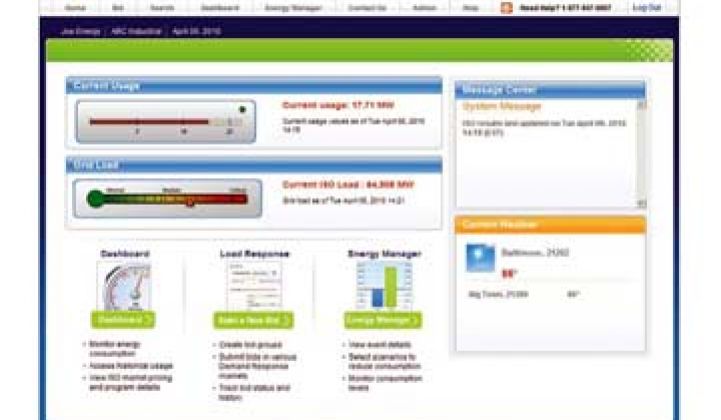At first glance, VirtuWatt, Constellation Energy’s new energy management tool, looks a lot like other web portals through which customers can monitor their power usage and take advantage of demand response. But dig a little deeper and VirtuWatt has far loftier goals than many other portals: it aims to engage commercial customers with the spot market and help them constantly tweak load throughout the year, not just during peak events.
Constellation Energy didn’t buy demand response provider CPower last fall just to get a leg up on demand response services -- instead, the provider is looking to have a comprehensive service for customers to understand the competitive market and get involved in a way that allows them to save money and energy.
The large, diversified energy provider, which generates about 9,000 MW, has a sizable trading platform where commercial and industrial customers can lock into rates for up to five years at a time. Half of Constellation’s load, however, floats on the spot market. “Those are the ones we really want to help,” said Peter Kelly-Detwiler, Senior Vice President of Energy Technology Services at Constellation Energy. “The goal we’ve always had is that we want to create physical call options at the customer site.”
The acquisition of CPower will let Constellation Energy offer the sales team and support staff so that VirtuWatt can be used effectively by customers, allowing them to respond to prices and shed load as prices go up. Kelly-Detwiler estimates there will be about 1,500 MW on VirtuWatt; currently, there are a few hundred megawatts.
The platform, like others, shows current usage, but it also shows market price. Additionally, it has WeatherBug and a feature where customers can drill down into a specific time frame (a week, let’s say). Then, you can see what your load is in terms of a monthly budget. If it’s hot the first week of August, VirtuWatt could help assess some load shedding you might want to ramp up for the end of the month to keep the energy bill in check. It is connected to ISOs and there is also a bidding platform for those customers that are involved in the markets. As for the demand response capabilities, Constellation works with its customers to tailor the load shedding depending on the business and builds various options for companies to shed load based on the event, season and time of day. The expectation is that with the help of this platform, demand response will look like generating capacity.
“We don’t think of demand response as an isolated thing,” said Kelly-Detwiler. “We think, ‘How do we serve our customers across this gamut of opportunities?”
VirtuWatt is still pretty new, and so the current offerings are just the beginning, according to Kelly-Detwiler. He expects they’ll do far more with weather, increasing the sophistication of the system over time. For example, could an app let the building manager know how long before the chillers need to kick in? There will also likely be a solar feed built in, so DR strategies automatically kick in if a cloud passes over the solar array on the roof. There are a bevy of startups that could help offer that increased sophistication, so more partnerships could be coming down the road. Kelly-Detwiler doesn't think that individual companies will be winners in this space, but he asserts that strategic partnerships will be well positioned to make a splash.
Currently, the company's offerings are only for C+I customers, because that’s where the big savings is -- and those are the ones that are trading on the wholesale market -- but Kelly-Detwiler expects that there will be a residential app down the road.
Demand Response

Can VirtuWatt Fulfill the Promise of a Competitive Market?
Constellation Energy says demand response is just the first stop.

Can VirtuWatt Fulfill the Promise of a Competitive Market?
Photo Credit: Constellation Energy
-
41Where Will DOE’s Loan Program Make the Next Climate Tech Investments?
-
15What the Frack Is Happening With Natural Gas Prices?
-
9With an Energy Crisis Brewing, No Peak in Sight for Emissions


